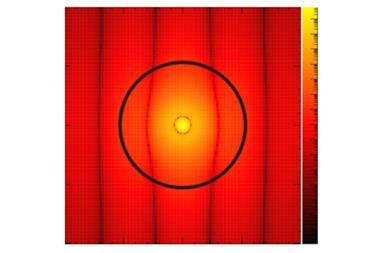Scientists reveal how genetic algorithms help lasers selectively cleave chemical bonds
US researchers have demonstrated for the first time why a technique called coherent control is able to break molecular bonds selectively using finely-tuned pulses of laser light.
’Ever since the laser was invented people have tried to think of ways to use it selectively to break chemical bonds,’ said Ben Whitaker at the University of Leeds, a researcher who is active in the field. ’Originally people thought that if you simply fired light of a particular frequency and intensity into a molecule, you could energise a specific bond. What they found was that the energy rapidly becomes randomised around the entire molecule. All that the laser does is heat up the molecule like an expensive Bunsen burner.’
In coherent control, however, a short pulse of broad-spectrum laser light is split into a large number of its constituent frequencies by a diffraction grating and filtered by a voltage-controlled mask - typically a liquid crystal. The frequencies are then refocused and targeted on the molecule under investigation. The ’shape’ of the pulse - the sequence at which the frequencies hit the molecule and their individual intensities - can be controlled relatively simply. As the different frequencies hit the molecule, different bonds can be energised sequentially, thereby avoiding randomised diffusion of the energy around the molecule.
It’s too complicated to design the ideal shape for the laser pulse, because the quantum mechanical status of a particular molecular bond cannot be determined accurately enough. So researchers devised a way of allowing pulses to ’evolve’ to appropriate shapes by driving the system with a genetic algorithm - a computer program that teaches the laser how to improve the pulse with each iteration.
In practice, a pulse is split into, say, 100 frequencies that are each set at one of 50 levels of intensity before being fired at the molecule. If this particular pulse shape achieves a result - excitation of a given bond, for example - the information is stored and the sequence is tweaked slightly, or else combined with another sequence that also produces a result. Pulse shapes that produce no result are discarded. This technique of closed-loop feedback using genetic algorithms was developed by Herschel Rabitz at Princeton University, New Jersey, US, in the early 1990s. But the fact that it works at all has perplexed researchers for more than a decade.
’If you consider that you have 100 frequencies and each of these has 50 levels of intensity, there are a total of 50 to the power of 100 possible variations,’ Rabitz told Chemistry World. ’Even though we can do several thousand experiments in minutes, the chances of hitting a correct sequence at random would be infinitesimal.’
However, convergence to an optimal pulse shape is typically achieved remarkably quickly - typically after only 30 or 40 generations, which can take literally a few minutes. The reason for this rapid convergence has hitherto remained a mystery.
But now, Rabitz and his colleagues have provided a mathematical explanation of the paradox. They have proved that within this multidimensional quantum landscape - the vast ’search space’ - there are almost as many solutions as there are problems. ’So it is not like looking for a needle in a haystack,’ said Rabitz. ’It is like trying to hit a barn door with a barn door.’
A shaped laser pulse will cause the quantum mechanical wave function of a chemical bond to evolve over time, explains Rabitz. ’There is a basic property of Schroedinger’s equation implying that this evolution does not destroy the wave function itself.’
This means that as the wavefunction changes it shifts through an enormous number of states, raising the chances that one of them will match up with the shape of an incoming laser pulse. ’There is almost an infinity of answers,’ said Rabitz. ’And in hindsight this has to be the case, in order to explain the growing number of successful experiments.’
Simon Hadlington
References
et alPhys. Rev. A2 T Ho and H Rabitz, 2006, J. Photochem. Photobiol.180, 226







No comments yet